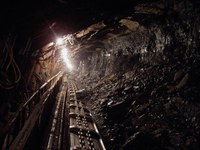
Introduction
The updated Mining Charter was published on 27 September 2018.[1] In terms of Section 100 of the Mineral and Petroleum Resources Development Act of 2002, the aim of the Mining Charter is to ensure the attainment of Government’s objectives of redressing historical, social and economic inequalities as stated in the Constitution. In order to achieve this, a broad-based socio-economic empowerment Charter sets the framework, targets and time-table for effecting the entry of historically disadvantaged South Africans into the mining industry, and allows such South Africans to benefit from the exploitation of mining and mineral resources.
A continuing counterproductive approach by Government
Whilst we support these aims, the problem remains one of conflicting philosophies between the Government and the private sector, coupled with South Africa’s current economic situation. The new Mining Charter contains Government’s prescriptions as to what has to be done, without actually considering the effect of such measures on a sector which is run on a commercial basis and faces market constraints. Struggling companies are to be dealt with on exactly the same basis as successful ones - whether a company is in a commodities boom or trying to survive in a depressed part of the cycle makes no difference to the drafters of the Mining Charter.
The assumption of the Mining Charter is simply that the mining industry makes more than enough money to fund any requirements that Government may wish to place on it. This makes no economic sense, especially when a stagnating economy needs policy measures to boost growth and employment. Implementing policy measures such as the Mining Charter without taking into account the country’s economic requirements, is tantamount to closing your eyes to reality.
An alternative approach is possible
A much more sensible approach by Government would have been to come to an agreement with the mining industry on how to fund the requirements of the Mining Charter. This could, for example, be done to a far greater degree on the basis of sharing the profits of mining companies. Gold mining companies are taxed in terms of a progressive rate formula, where marginal gold mining companies with nominal profits, pay no company tax. An approach of this kind would bring a clear benefit to both industry and Government: on the one hand, industry would receive a sufficient share of the profits which it generates in good times and not be disadvantaged when it is struggling, making growth in the sector possible. On the other hand, Government’s share would be able to fund employee shareholding in companies, provide support to mining communities and implement other measures aimed at redressing historic inequalities.[2]
Public reaction to the new Mining Charter
Public reaction to the Mining Charter has generally been positive, in the sense that it is seen to be much better than the 2017 document[3] and better than the subsequent 2018 draft. One aspect in particular is held up in these positive assessments: existing mining right holders with a 26% shareholding (as required in the previous version of the Mining Charter) will be recognised as compliant for the duration of the mining right and do not have to increase it to 30%, as applicants for new mining rights will have to do. However, the mere fact that the final version is an improvement on previous versions is not sufficient to make it satisfactory.
Our concern
Our real concern relates to whether the Mining Charter will assist economic growth and employment. To illustrate this point, let us suppose that you are considering investing in a company which is applying for a new mining licence. The new Mining Charter would require your company to do the following, amongst many other things:
- give up 10% of the company (a 5% “non-transferable carried interest” for employees and a similar 5% interest for host communities - in other words, 10% of the share capital has to be made available, at no cost, to these two categories);
- ensure that BEE entrepreneurs take up a 20% interest (which would, most probably, have to be funded by the company itself, and offered at a discount);
- accept that in future capital funding through rights issues, the remaining 70% shareholders will have to be responsible for 100% of funds to be raised, and the 10% share given to employees and communities is not to be diluted; and
- procure at least 70% of the value of mining goods from South African manufacturers, of which 21% must be produced by a Historically Disadvantaged Persons owned company, 5% by a women or youth owned company and 44% spent on goods produces by a BEE compliant company. The degree to which this is attainable is not clear to us - even if it may be possible in certain cases, the work load that it creates is substantial. Procurement restrictions on services are even more stringent.
Mining rights holders who fail to comply with the Charter’s ownership requirements or fall below a certain point on the Charter’s scorecard will be in breach of the Mineral and Petroleum Resources Development Act, rendering them liable to the suspension or termination of their rights.
Would you be prepared to invest in a company or project if it is subject to these requirements, given your investment return requirements in a sector which has higher risks than many others? Do these requirements make South African mining an attractive investment opportunity, in comparison to mining elsewhere in the world or investments in other sectors?
The sector’s specific circumstances are:
- it is technically demanding;
- it requires a substantial investment for projects which may take years to complete;
- it is often labour-intensive (whilst it is a generator for jobs, it is also regularly subject to labour disputes);
- it is exacting from a safety perspective;
- it is generally dependent on international commodity prices and exchange rates over which it has no influence and is subject to the ups and downs of the commodity cycle; and
- finally, it is subject to regular revisions of regulatory instruments such as the Mining Charter, which does not provide confidence regarding the certainty of Government policy (generally regarded as an important criterion in investor perceptions of a country).
The Department of Mineral Resources has shown itself unable to deal with what motivates investors in mining.
Conclusion
In its doctrinaire approach, the Department of Mineral Resources has continued on a path of requiring the mining industry to do whatever it dictates, without regard to whether the industry is profitable or not, and whether it is able to carry the costs of compliance. A more productive policy would have been to share profits in the good times between the Government and mining companies, applying them to the aims of empowerment in mining. In more difficult times, it is essential not to burden companies with costs which may be impossible to bear.
Anton van Dalsen
Legal Counsellor
anton@hsf.org.za
[1]Government Gazette No. 41934 of 27 September 2018. Mining Charter implementation guidelines are to be published in the following two months.
[2] For more detail, see our submission of 28 August 2018 in response to the Draft Mining Charter: https://hsf.org.za/publications/hsf-briefs/submission-on-the-draft-broad-based-socio-economic-empowerment-charter-for-the-mining-and-minerals-industry-2018
[3] Implementation suspended as a result of legal action by the Minerals Council

